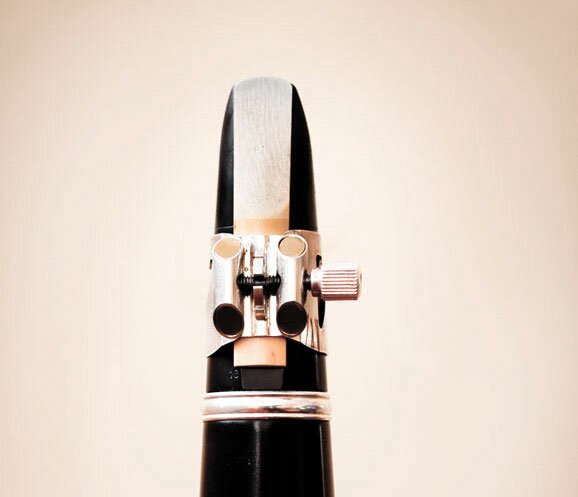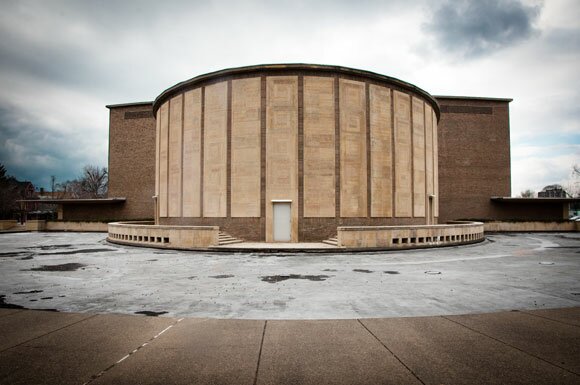BUFFALO, N.Y. — Even if you know nothing about the oboe or the clarinet, about how these instruments are made or how they make their music, you would know that the heartwood of the African blackwood tree is something special.
The material is dense and dark: black like coffee or molasses or the armor of a triceratops beetle. It’s wood the color of chocolate, wrapped in a lining of oatmeal bark.
In Tanzania and Mozambique, two of the last places in the world where the African blackwood grows in commercially viable quantities, locals know the tree by its Swahili name, mpingo, or by its Portuguese name, pau preto. From these countries, the timber makes its way to opera houses, jazz clubs, concert halls and festivals around the world.
Musicians know the wood as grenadilla, the material of choice for bagpipes, oboes and clarinets. What many don’t know is that the tree is often logged illegally and that stocks of the species are dwindling.
Take John Fullam, principal clarinetist of the Buffalo Philharmonic Orchestra (BPO). Fullam, who has played with the orchestra for 20 years, is a talkative, bearish man with a square face and shock of silver hair. He remembers the moment, half a century ago, when he fell in love with music. He was 8, a kid from Nassau County on the west end of Long Island, and saw famed jazz musician Pete Fountain playing a clarinet solo on TV.
“A camera would zoom up to his finger up close, and I was just mesmerized,” Fullam said. “It was like magic coming out of those fingers, and he made it look so easy, too. But there was something about the tone; it was like a call of seduction, and I was seduced for life.”
Fullam was 9 when his parents bought him his first instrument; 18 when he made it to Juilliard; 19 when he traveled to Italy’s Amalfi Coast, with cliff-side villages spilling down into an azure sea, to play his first foreign tour. He has written essays on the history of the clarinet and its music, and says the instrument is an extension of the self: a larynx, a voice box, outside of the body.
And yet, he believed that African blackwood trees grew in large numbers in southern Germany, France and Austria—misinformation, according to Neil Bridgland, director of Sound and Fair, a social enterprise that supplies manufacturers with legal grenadilla.
In an interview at his Amherst home this August, Fullam said, “There’s more than enough wood, more than enough trees.” A few days later, however, he revised his perspective after reviewing BBC news reports and an advocacy group’s fact sheet on illegal logging.
“I know my position on this issue has now been brought into much sharper focus: I fully believe that the environmentalists and the instrument manufacturers need not be diametrically opposed in this situation, and that working together for the protection of the rare tree can definitely be a boon to both sides,” Fullam wrote in an email.
“I would greatly appreciate your offer of our keeping mutually informed on this issue, and remain very grateful for your bringing it to my attention.”
There is something twisted, something unsettling, about an illicit commodity yielding such beautiful music. Could Mozart’s clarinet concerto or Rhapsody in Blue’s opening glissando really emanate from such a dark place?
This juxtaposition is not singular in the annals of music history. In the 20th century, demand for ivory for piano keys fueled the slaughter of elephants in East Africa.
Violin bowmakers have long prized timber from the pernambuco, a South American tree on the International Union for Conservation of Nature and Natural Resources’ endangered species list. Pernambuco, also called pau Brazil, has suffered exploitation since the 1500s, when European traders started shipping its heartwood home as a source of dye.
Throughout history, colonizers and other powers have stripped nations of natural resources, mining, poaching and logging with little benefit to people who live on the land.
Sal Andolina, a native of Grand Island, a boy who grew up listening to his cement mason father’s recordings of jazz and classical works, today plays alongside Fullam as a member of the BPO’s woodwind corps.
He describes the relationship between musician and instrument in tender terms: A performer must learn the intricacies of each clarinet or saxophone, he says, because each responds differently to the human touch.
An instrument “just becomes a part of you,” Andolina says. “It’s an extension of yourself.”
Andolina’s clarinet is a finely crafted grenadilla piece dating to about 1960. He is unsure how to feel about news reports proclaiming that mpingo suffers from illegal logging.
“Is it the harvesting that’s illegal?” Andolina asked. “Or is it corrupt means to gain access to forests? Or is it extraction without permission? Or is it a cutting of a protected species? Or how about extraction of timber in excess of agreed limits?”
“The articles I’ve read,” he said, “don’t explain what the illegalities are. I don’t know. Is it a humanitarian [issue]? Is it taxes? Is it permits?”
Observations on the ground provide some answers.
Brenda Schuman-Post, an oboist from California who has spent 20 years studying the grenadilla trade, said she witnessed or heard about many forms of corruption while traveling in East Africa in 2008. Some business people she met kept operations clean, but it wasn’t difficult to find examples of wrongdoing.
“You’re talking about a bribe-based culture,” she said, recalling one encounter in Mozambique. “So, for example, I met a sawmill owner who said, ‘Why should I pay the license fee? I’m going to have to bribe the agricultural guy anyway.'”
Several years ago, TRAFFIC, a group that monitors the sale of wild plants and animals worldwide, undertook a study of Tanzania’s timber trade. The investigation, published in 2007, described a cesspool of crooked behavior.
There was bribery. There was favoritism. There were incidents of “rubber stamping,” during which illegal wood obtained a cover of legitimacy through documentation issued after the fact. In a survey of 10 coastal forests, every mpingo stump examined fell below the legal diameter for harvesting—evidence that loggers were taking undersized trees.
The report concluded that in mid-2004, official records accounted for as little as 4 percent of the wood cut in parts of the country’s south. At one point, the authors wrote, “Trade statistics show that China imported 10 times more timber products from Tanzania than appear on Tanzania’s own export records.”
Failures like this matter because they result in lost income and taxes that governments could spend on economic and social development.
Dig Deeper
![]() A synopsis of TRAFFIC’s 2007 report on forest management and illegal logging in Tanzania. A full version is available from TRAFFIC.
A synopsis of TRAFFIC’s 2007 report on forest management and illegal logging in Tanzania. A full version is available from TRAFFIC.
![]() A 2012 report on forest management in Mozambique. Published by the Center for International Forestry Research, this working paper focuses on relations with China, a major trading partner.
A 2012 report on forest management in Mozambique. Published by the Center for International Forestry Research, this working paper focuses on relations with China, a major trading partner.
Though forest management has improved since the release of the TRAFFIC study, illegal logging is still a severe problem in East Africa, said Bridgland, the director of Sound and Fair, the company that supplies manufacturers with ethically-traded timber.
The problem can seem overwhelming: “African blackwood is traditionally, historically, found across many regions of Africa reaching from South Africa all the way up to Kenya and across different areas of West Africa,” Bridgland said. “The majority of it is now gone on a commercial basis. Around 100 years ago, there were still stocks throughout Kenya … and certain parts of Zambia, but the range is now restricted to Southern Tanzania and [Northern] Mozambique.”
Though the export of wood for musical instruments isn’t the only pressure facing mpingo, Bridgland sees it as the greatest one: “That’s the most valuable—that’s where the money is, and that’s why the range has been squashed down to this area,” he said.
Traditionally, before the 20th century, woodwind instruments in European orchestras were made from boxwood trees native to the continent, Bridgland said.
But about 100 years ago, “linked with the colonization of Africa, makers started using blackwood because it was a superior species,” he said.
Grenadilla is dense, fine-grained and resistant to cracking—properties that make it easier for manufacturers to drill well-defined finger holes and obtain a smooth finish, as desired, in the interior wall, said Ulrike Wegst, a Dartmouth College researcher who has studied the construction of musical instruments.
Finding new materials that replicate these qualities is one way to relieve pressure on African forests.
Schuman-Post, for instance, plays on oboes from Buffet Crampon’s Green Line collection.
These amalgamates are made of pulverized blackwood mixed with epoxy resin. The ratio between materials slants heavily toward grenadilla, but the powdered wood comes from factory leavings that would otherwise have gone to waste, said Matt Vance, woodwind product specialist at Buffet Group USA.
Green Line instruments have been around for years, and they’re relatively popular: Fullam bought one before he became aware of environmental concerns. It’s a wonderful innovation, really—beauty conjured from sawdust, a clarinet made from scraps.
But Green Lines don’t do much to address the social dimension of illegal logging—problems like the lost timber revenues that the TRAFFIC study outlined. Bridgland believes there’s a better solution for saving forests.
In Southern Tanzania, Sound and Fair is helping to ensure that locals get a fair price for their wood by working with a nonprofit called the Mpingo Conservation and Development Initiative (MCDI) to manage forests better.
MCDI has helped seven villages set up reserves—areas where the communities own timber rights and take responsibility for sustainable harvesting. In each tract, residents assess the tree stock and create a management plan with MCDI’s support. Then, they can sell the wood, with independent verification to ensure accountability.
That’s where Bridgland and his colleagues come in. Sound and Fair supplies instrument makers with timber from the reserves, raising money for improving education, health care and infrastructure in local communities.
One village, Kikole, in the Kilwa District, used proceeds from sales to drill a borehole for obtaining water, according to Sound and Fair. Another project: building a home for a midwife who may otherwise have moved to a different locale.
The seven reserves in the MDCI program are Kikole (454 hectares), Kisangi (1,966 hectares), Liwiti (6,229 hectares), Nainokwe (8,502 hectares), Tawi (2,787 hectares), Nanjirinji (61,000 hectares) and Nyamwage (1,294 hectares). Each operates with Forest Stewardship Council (FSC) certification, a globally recognized emblem of responsible forest management.
In 2010, Hanson Clarinet Company of Great Britain became the first woodwind manufacturer to purchase blackwood from the reserves. Since then, buyers have ranged from a German recorder company to Irish flute makers. C.F. Martin & Co., which has been making guitars for over 175 years, is experimenting with timber from the reserves, Bridgland said.

French maker Marigaux offers a Forest Stewardship Council-certified oboe | Marigaux (edited to remove color)
He says FSC-certified wood is available at the same price as non-FSC wood, and that pending or existing legislation to fight the trade of illegal timber is forcing instrument-makers in the U.S., Europe and Australia to think about sourcing materials more responsibly.
A federal investigation into Gibson Guitar’s sourcing practices, while controversial, has also added pressure.
Manufacturers who want to do more can become FSC-certified themselves by putting systems in place to track how FSC wood is used from the moment it arrives at a manufacturing facility, and paying for annual inspections, Bridgland said.
Such measures can be expensive, however, and cost is not a frivolous concern, said Schuman-Post, who has traveled around the United States to educate fellow musicians about grenadilla and related ecological and social justice concerns.
She notes that at every point in the supply chain, from milling to manufacturing, business owners need to think about the bottom line to survive. Like Bridgland, she hopes that grenadilla, with its immense value on international markets, can help lift people out of poverty. She thinks FSC certification is an important solution to that problem, though not the only one.
With all that’s happening, it may seem strange that so many woodwind musicians are unaware of problems with grenadilla.

John Fullam's clarinets. While previously unaware of problems surrounding grenadilla, Fullam is now a concerned musician | Jenna Boshart
News about the African blackwood tree is readily available online, and MCDI and Sound and Fair are just two of several organizations working to draw attention to the issues.
Clarinets for Conservation, an Upstate New York group, inspires Tanzanian children to cherish forests by introducing the students to the clarinet.
The African Blackwood Conservation Project, led by a Tanzanian botanist, has been planting trees and educating locals about the value of natural resources since 1996.
Tanzania’s government has also put a spotlight on illegal logging, backing efforts like the 2007 TRAFFIC report.
So how is it possible that so many woodwind players know so little about the story of grenadilla, about how their oboes and clarinets—so prized, so cherished—start life as a tree in East Africa?
Andolina, a nature lover whose home overlooks the Niagara River, offers one potential answer. It was troubling, Andolina said, to discover the problems surrounding grenadilla. But he points out that this kind of revelation isn’t unique to the world of music, or to musicians.
“I think it’s like this,” Andolina said. “We grow up in a society where we go to the supermarket and all our food is there, and all your produce, and I don’t think a lot of people think beyond where all of this comes from. How was it raised? How was it grown?”
Our lives are intricately tied to natural resources of invisible origin: The diamonds in our engagement rings, the fish on our dinner plates, the roses we buy as a token of love.
We take it for granted that these objects reach us through a process that’s fair and clean. Then the wake-up call comes.
Robert Salonga, a crime and public safety reporter for the San Jose Mercury News in the San Francisco Bay Area, edited this story. The photograph of the African blackwood log that appears on our home page belongs to Sound and Fair, and was obtained through the Forest Stewardship Council.








Another informative, well-researched and interesting article! I heard Sal Andolina play recently so I felt like I kind of knew him:) The article makes me realize how things are taken for granted. Further inquiry shows us how inter-related the world is and how what we use affects others.
Thanks for reading, Aunt Patty. =) Where did you see Mr. Andolina play?
I saw a vinyl record turntable clamp selling on line for $3000 dollars made from Mpinho. The seller waxed poetically on how it improved the sounds of his records and all it does is clamp the record to the turntable.